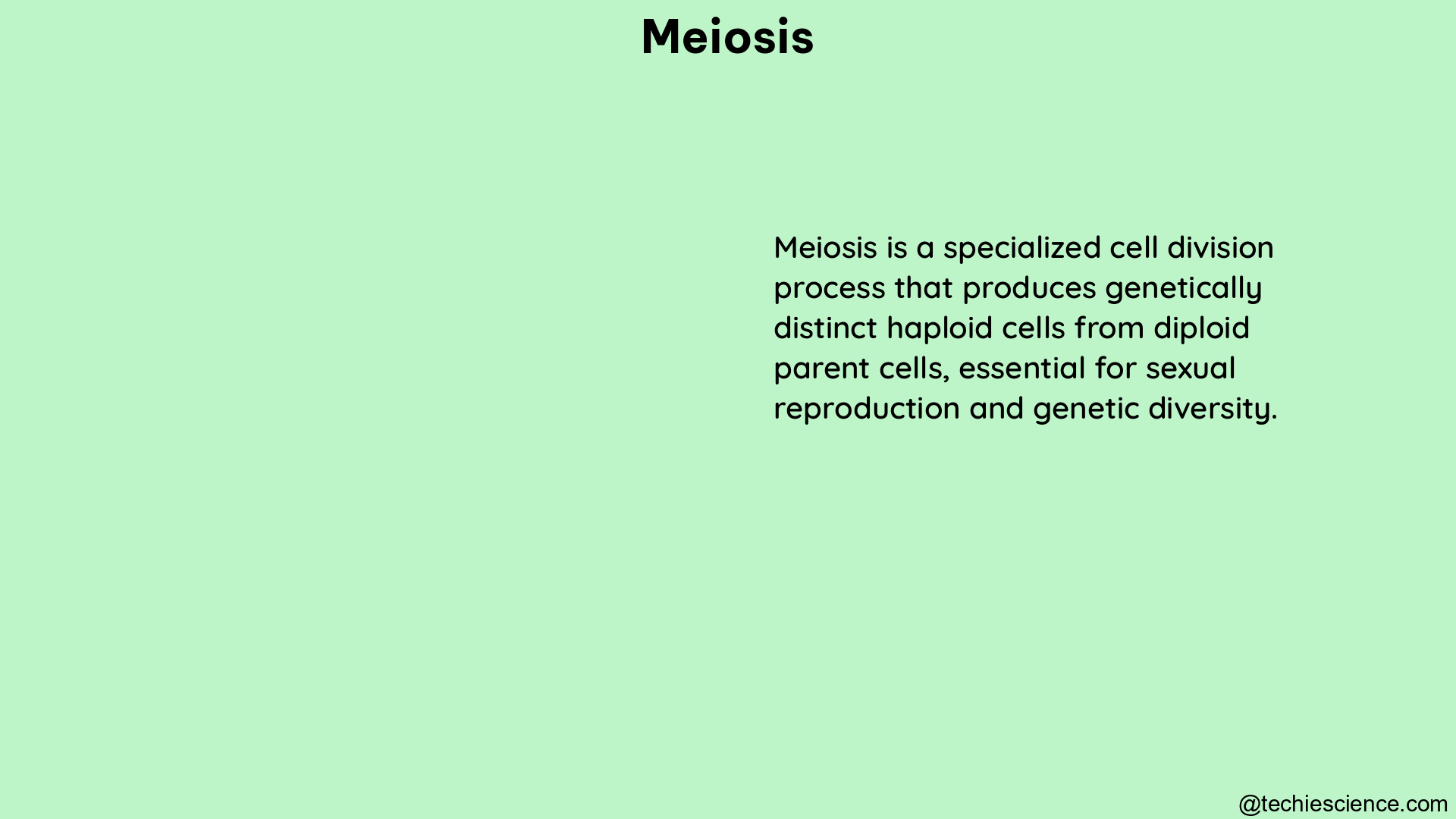Meiosis is a fundamental process in sexual reproduction, where a single diploid cell divides and gives rise to four haploid daughter cells, each with a unique genetic makeup. This intricate dance of chromosomes is crucial for maintaining genetic diversity and ensuring the successful transmission of genetic information from one generation to the next.
The Stages of Meiosis: A Detailed Breakdown
Meiosis is a complex process that can be divided into two distinct phases: Meiosis I and Meiosis II. Each phase consists of several distinct stages, each with its own unique characteristics and events.
Meiosis I
-
Prophase I: During this stage, the chromosomes condense and become visible within the nucleus. Homologous chromosomes pair up and undergo a process called synapsis, where they form a structure called a bivalent or a tetrad. This is followed by the process of genetic recombination, where the paired chromosomes exchange genetic material, creating new combinations of alleles.
-
Metaphase I: In this stage, the bivalents align along the equatorial plane of the cell, with the homologous chromosomes facing opposite poles.
-
Anaphase I: The homologous chromosomes separate and move towards opposite poles of the cell, reducing the chromosome number by half.
-
Telophase I: The cell now has two daughter cells, each with a haploid set of chromosomes. The nuclear envelope reforms, and the chromosomes begin to decondense.
Meiosis II
-
Prophase II: The chromosomes in the daughter cells condense again, and the spindle fibers begin to form.
-
Metaphase II: The chromosomes align along the equatorial plane, with the sister chromatids facing opposite poles.
-
Anaphase II: The sister chromatids separate and move towards the opposite poles of the cell.
-
Telophase II: The nuclear envelope reforms, and the chromosomes begin to decondense. Cytokinesis occurs, resulting in four genetically distinct haploid daughter cells.
Quantifiable Data on Meiosis

Researchers have developed various techniques to study and quantify the process of meiosis. One such study utilized flow cytometry to assess three data analysis techniques for screening plant meiosis induction factors in a high-throughput and efficient manner.
The study found that both thresholding techniques and polygonal gating (considered the “gold standard”) were able to identify significant differences in cell populations with low spike-in concentrations of meiosis-like induction factors. Specifically, the researchers determined that the RFP (PE.CF594.A) and GFP (FITC.A) channels were the only ones required to make informed decisions on meiosis-like induction, with the ability to detect cell population changes as low as 0.3%.
This system can be easily scaled using microfluidic devices, allowing researchers to isolate protoplasts from callus cultures treated with candidate meiosis induction factors and analyze them for shifts in fluorescent cell populations. This approach provides a quantifiable and efficient way to screen for plant meiosis induction factors, which can be valuable for understanding the underlying mechanisms of this crucial process.
Genetic Recombination and Chromosome Dynamics
During meiosis, the process of genetic recombination plays a crucial role in creating genetic diversity. As homologous chromosomes pair up and undergo synapsis, they exchange genetic material, resulting in the formation of unique chromosomes with new combinations of alleles.
The dynamics of chromosome movement and segregation during meiosis are also highly regulated and coordinated. The alignment of bivalents along the equatorial plane during metaphase I and the subsequent separation of homologous chromosomes during anaphase I are critical steps in ensuring the accurate distribution of genetic material to the daughter cells.
Meiosis and Evolutionary Adaptation
The genetic diversity generated through meiosis is a key driver of evolutionary adaptation. By creating new combinations of alleles, meiosis allows organisms to better adapt to changing environmental conditions and respond to selective pressures. This process is particularly important in sexual reproduction, where the fusion of two haploid gametes (e.g., sperm and egg) results in a genetically unique diploid zygote.
Conclusion
Meiosis is a complex and fascinating process that is essential for sexual reproduction and the maintenance of genetic diversity. By understanding the intricate stages of meiosis, the dynamics of chromosome movement, and the quantifiable data that can be obtained through advanced techniques, researchers can gain valuable insights into this fundamental biological process. This knowledge can be applied to a wide range of fields, from evolutionary biology to plant and animal breeding, and beyond.
References
- Replication and Distribution of DNA during Meiosis – Nature
- Assessing data analysis techniques in a high-throughput meiosis-like induction detection system
- Meiosis | Learn Science at Scitable – Nature

The lambdageeks.com Core SME Team is a group of experienced subject matter experts from diverse scientific and technical fields including Physics, Chemistry, Technology,Electronics & Electrical Engineering, Automotive, Mechanical Engineering. Our team collaborates to create high-quality, well-researched articles on a wide range of science and technology topics for the lambdageeks.com website.
All Our Senior SME are having more than 7 Years of experience in the respective fields . They are either Working Industry Professionals or assocaited With different Universities. Refer Our Authors Page to get to know About our Core SMEs.